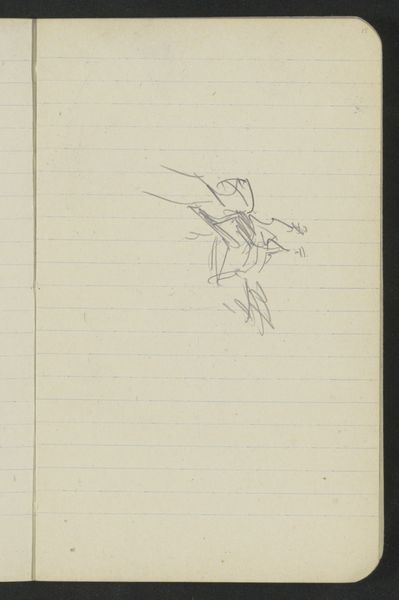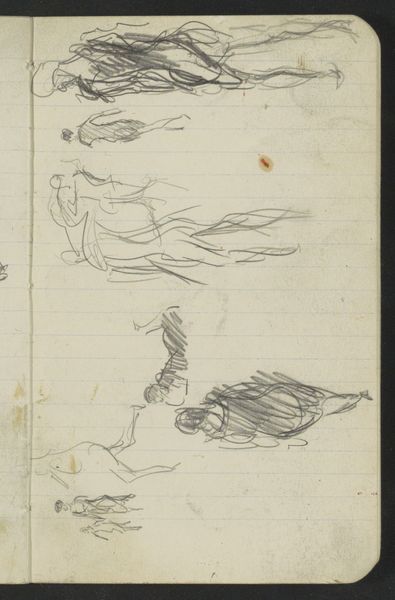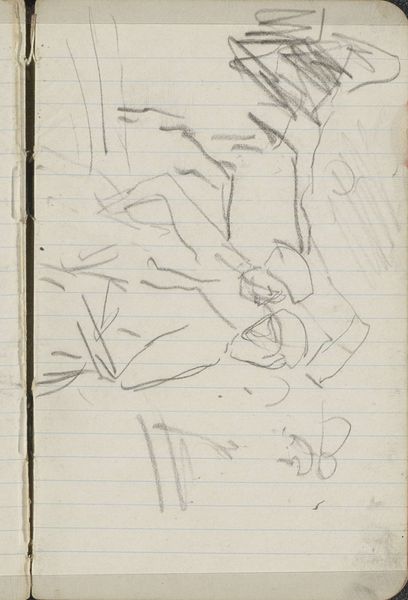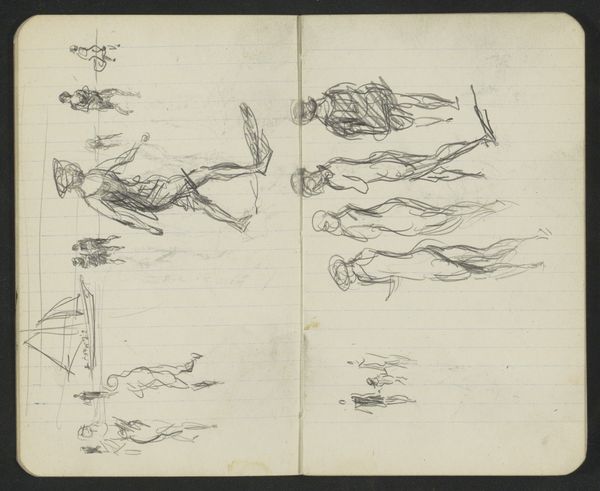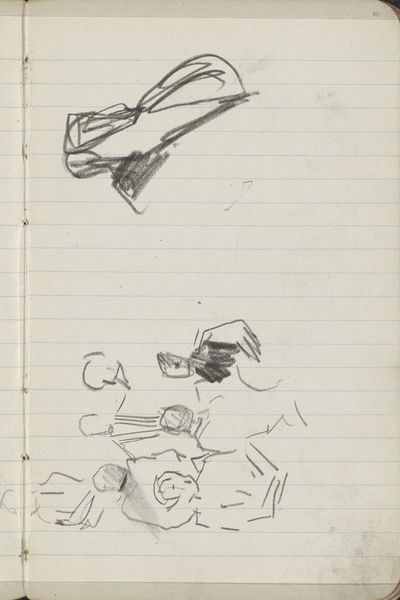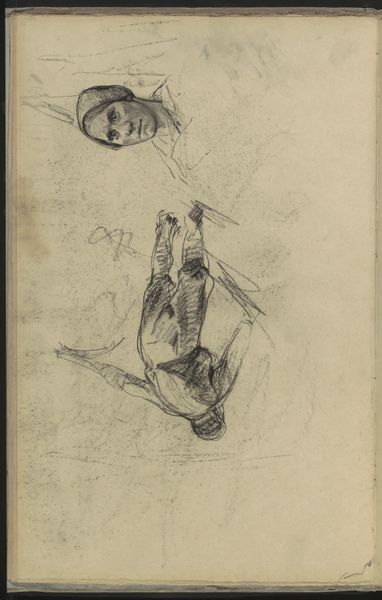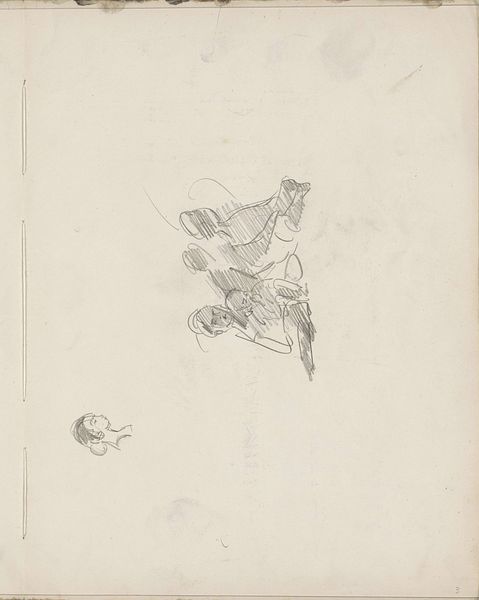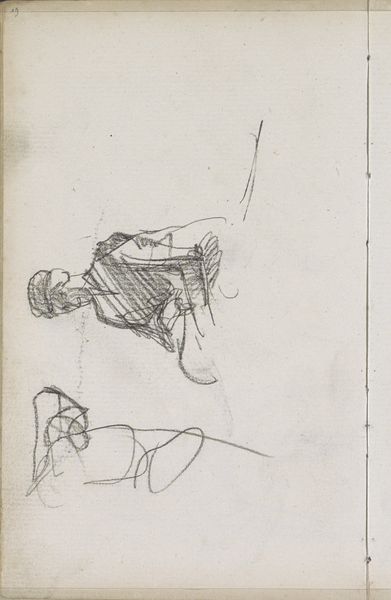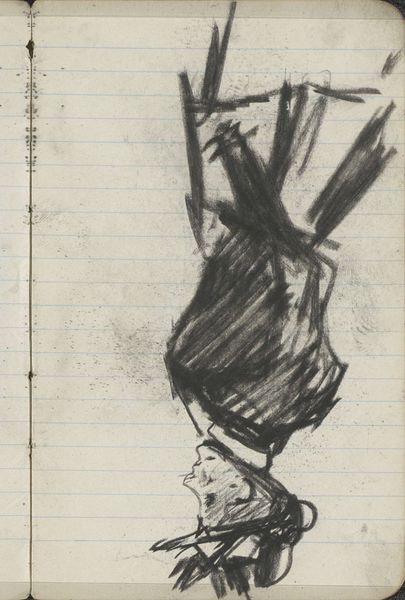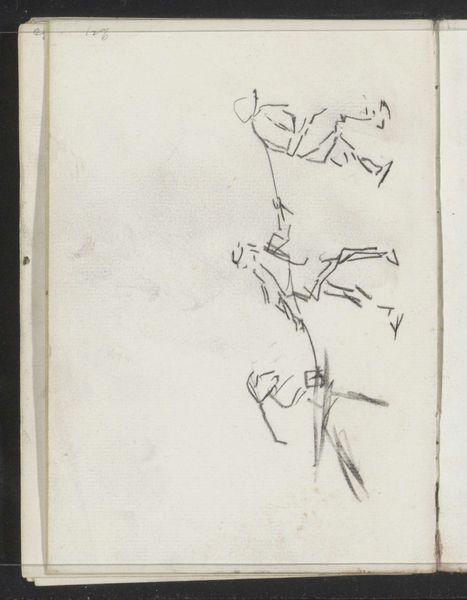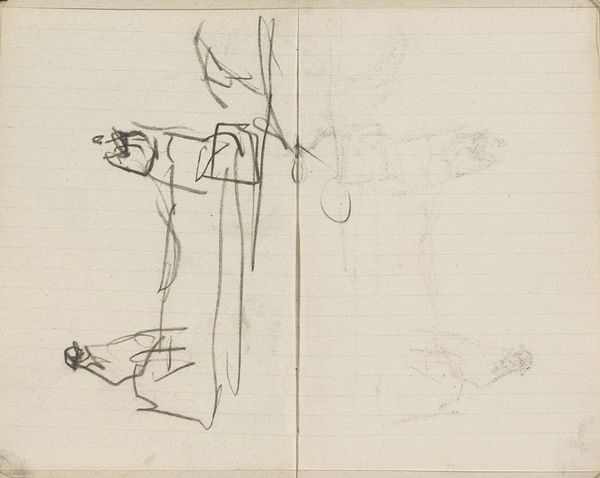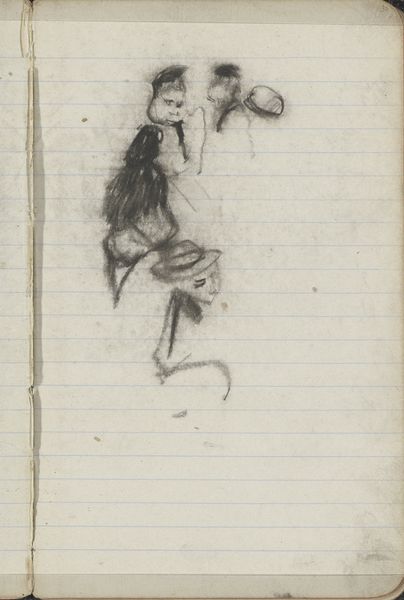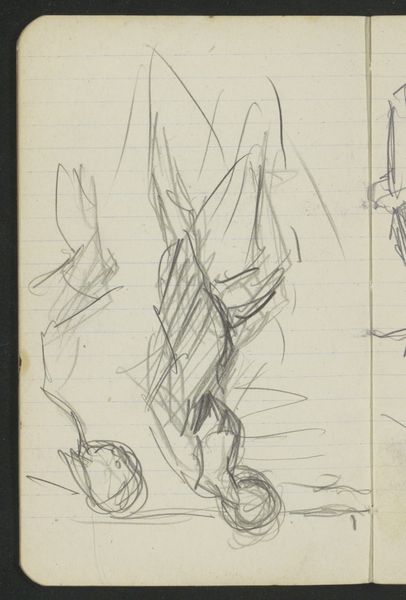
Copyright: Rijks Museum: Open Domain
Editor: This is "Ruiter," a sketch by Isaac Israels, created sometime between 1875 and 1934. It appears to be pencil on paper, a page torn from a sketchbook maybe? It looks so fleeting, like the artist was capturing a quick impression. What do you see in this work? Curator: I'm immediately drawn to the materiality here, the everyday nature of the sketchbook and the rapid strokes of the pencil. Israels isn't presenting a finished, polished product. Instead, he's revealing the raw, almost utilitarian, process of image-making. How does the cheapness of the material impact your interpretation? Editor: I hadn't thought of the material cost. I suppose it makes it seem more accessible, less precious than, say, an oil painting of the same subject would be. More like the artist's own, something to be consumed and forgotten after its purpose. Curator: Precisely! Think about the labor involved versus a large-scale history painting. The quick marks suggest a casual observation, perhaps done amidst a bustling environment. The 'Ruiter,' the rider, becomes less about heroic representation and more about documenting an experience of modern life, a fragment of the industrialized world he inhabited. Editor: So, you're suggesting the medium itself challenges the traditional notions of "high art" by highlighting process and everyday subject matter? Curator: Absolutely. Israels is democratizing art, taking it from the formal studio and placing it directly within the realm of daily life, readily available to be captured. This sketch embodies a new form of artistic production—easily made and readily discarded, reflective of a society increasingly oriented toward mass production and consumption. Does seeing it this way change how you feel about the sketch? Editor: Definitely. It makes me think about how even simple sketches like this can tell us about shifts in artistic practice, challenging traditional definitions of art by placing emphasis on materiality, process and historical background, like the labor invested in it, and how these were shifting through that period. Thanks! Curator: My pleasure. It’s exciting to look at the artwork as documentation of material production, and how it reflects labor conditions.
Comments
No comments
Be the first to comment and join the conversation on the ultimate creative platform.
